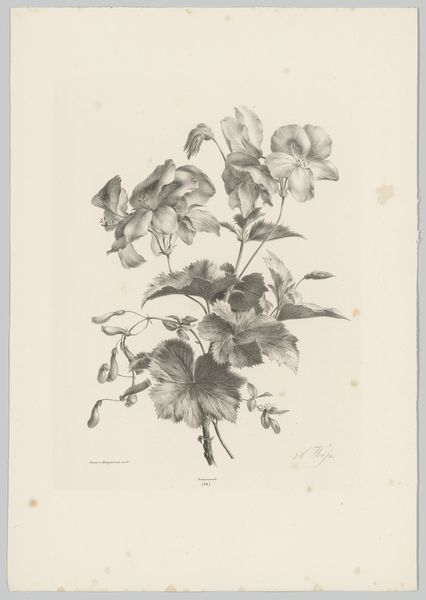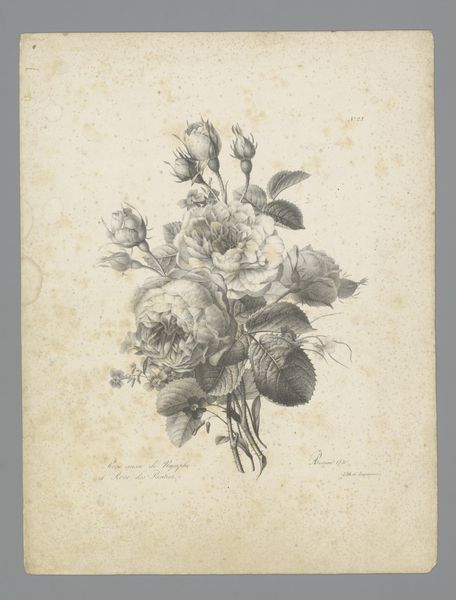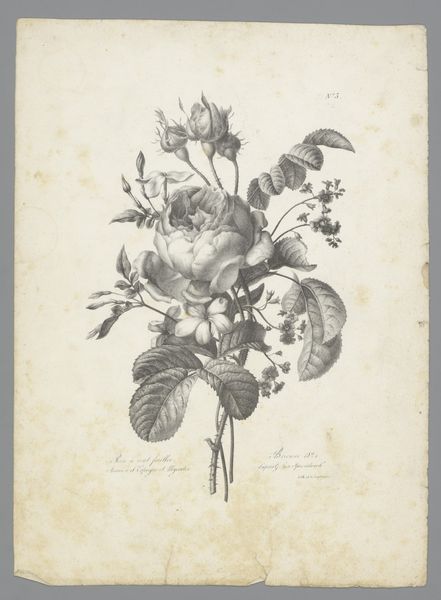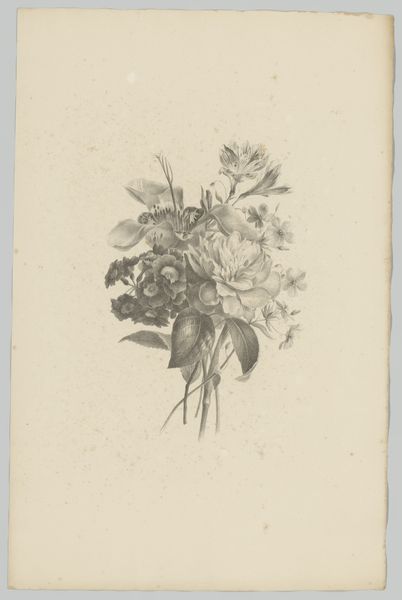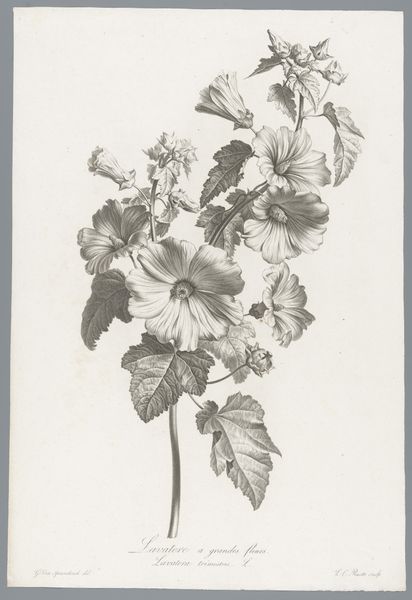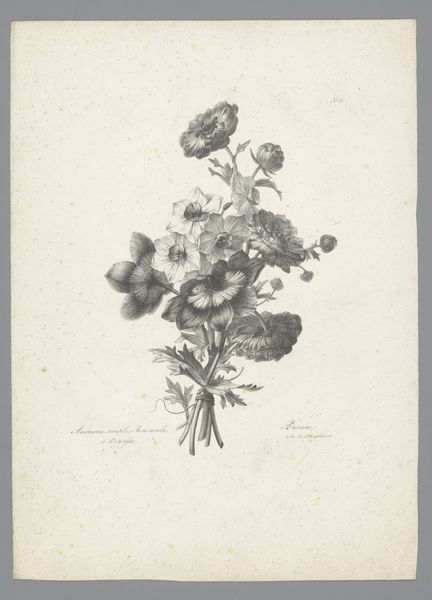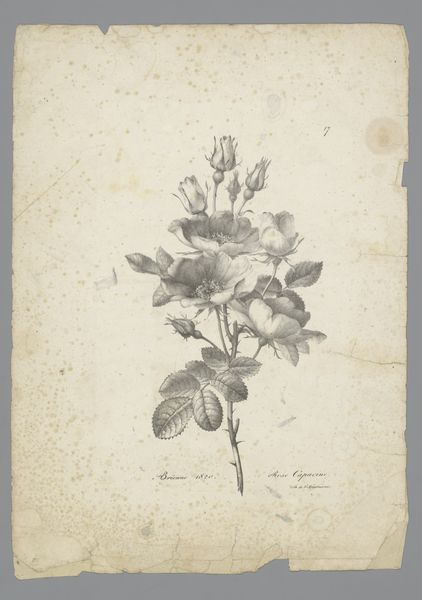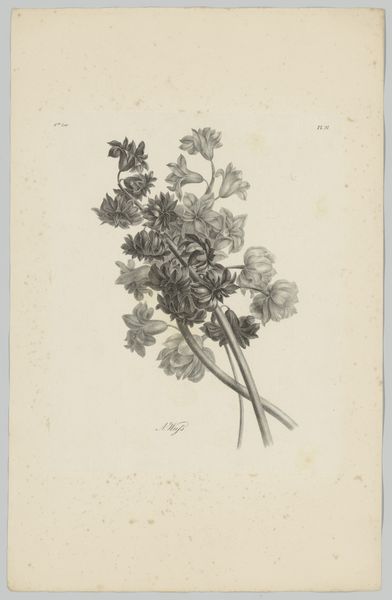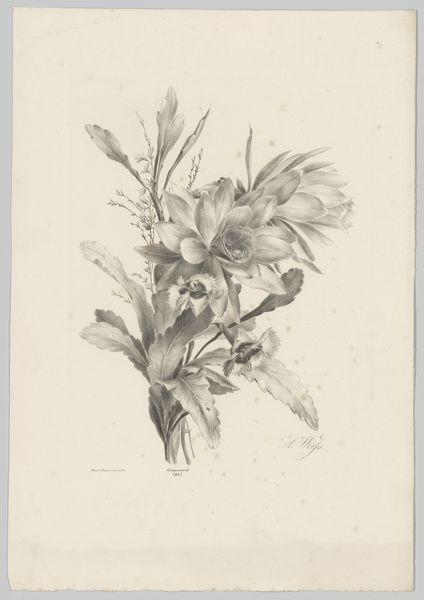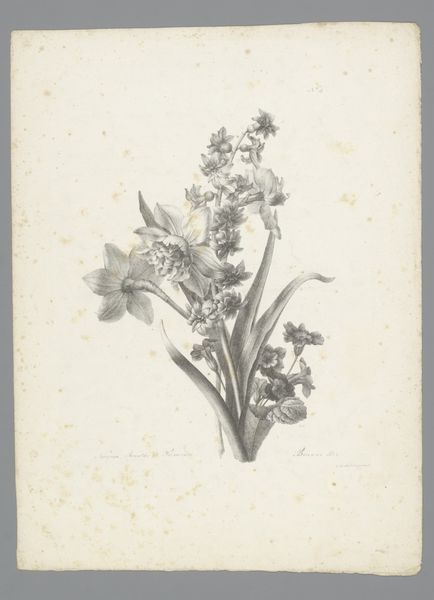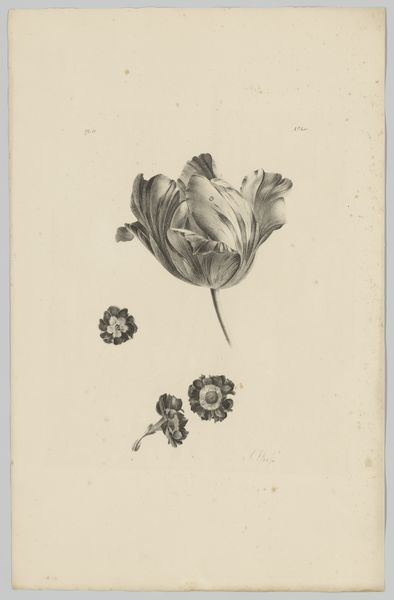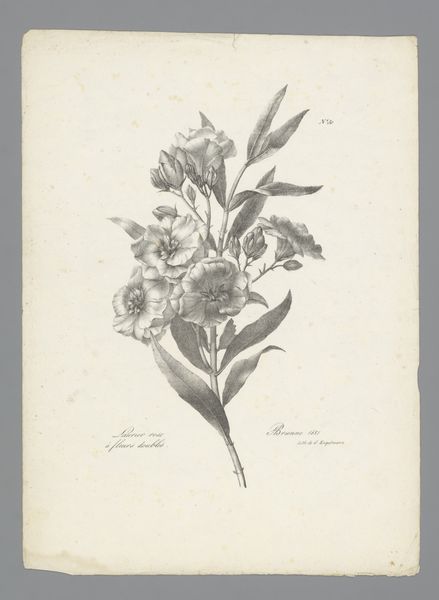
drawing, paper, graphite
#
drawing
#
flower
#
paper
#
romanticism
#
graphite
#
realism
Dimensions: height 360 mm, width 268 mm
Copyright: Rijks Museum: Open Domain
Editor: Here we have "Roze kaasjeskruid," or "Pink Mallow," a graphite drawing on paper created in 1821 by Auguste Piquet de Brienne. The subtle gradations of tone give the piece a serene and delicate mood. What stands out to you in terms of the composition? Curator: Observe how the artist utilizes a precise graphite technique, emphasizing the delicate veining of the leaves and the gentle curves of the petals. Consider the relationship between line and form; notice how the linear quality defines the structure while also creating depth and volume. Editor: It’s amazing how much detail is achieved with just graphite! Do you see symbolism in this level of rendering? Curator: The high level of botanical accuracy invites us to consider realism. While achieving optical truth, the artwork may or may not symbolize deeper meaning beyond objective appearance. Look closely at the relationship between the positive form of the plant and the negative space surrounding it. The placement allows one to see it suspended. What feelings does that choice invoke in you? Editor: The suspended state gives the subject a lighter feel, almost ephemeral, and contributes to that feeling of Romanticism, the fleeting quality of nature. Curator: Indeed. It encourages a formal consideration, rather than strictly representational. The arrangement also serves to flatten the composition while still achieving a depth of perspective. The artist directs the eye not to wander beyond its own constructed formal limitations. Editor: It’s fascinating how you analyze the lines and shapes! It enriches my experience and highlights the formal ingenuity behind botanical drawings. Curator: Indeed, understanding this ingenuity fosters a deeper appreciation for the intrinsic qualities of drawing as an art form, irrespective of the representational subject it holds.
Comments
No comments
Be the first to comment and join the conversation on the ultimate creative platform.
